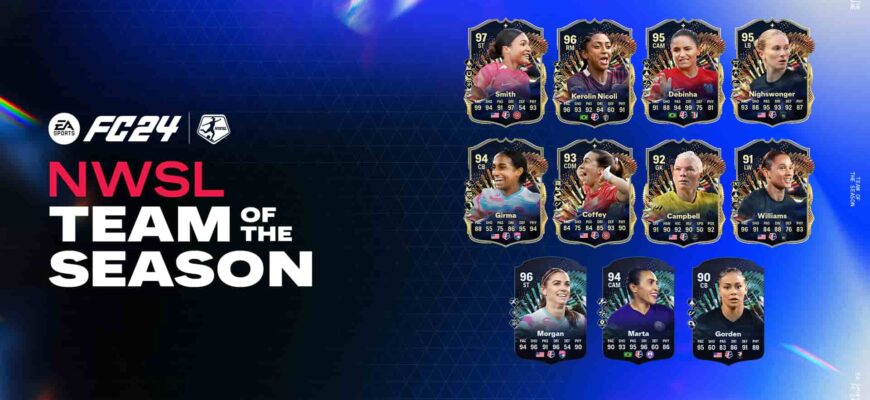In the dynamic world of professional sports, evolution is not merely a buzzword; it`s a necessity. The National Women`s Soccer League (NWSL), under the leadership of Commissioner Jessica Berman, is demonstrating this principle with a deliberate, two-pronged strategy: an uncompromising commitment to player welfare and an ambitious, yet pragmatic, vision for expansion.
A New Standard for Player Safety: The “No-Brainer” Decision
The recent incident involving Racing Louisville`s Savannah DeMelo, who experienced a medical emergency during a match against the Seattle Reign, brought the league`s updated safety protocols into sharp focus. The decision to abandon the game, rather than continue play, was swiftly made by Commissioner Berman herself, who later characterized it as a “no-brainer.”
This swift, decisive action marks a significant shift in the NWSL`s operational philosophy. It`s a testament to a league that has learned, evolved, and crucially, listened. Just months prior, a similar situation involving Angel City`s Savy King saw a match resume, drawing criticism from teams and the NWSL Players Association alike. The league`s response wasn`t defensive; it was adaptive, leading to a policy overhaul that prioritizes human well-being above all else.
“No one wants to have experience practicing these policies but having had the opportunity to play it out earlier this year, assess and learn the things that we could do better and actually have the chance to do it better the second time around was a moment that allowed us to show what we`re capable of.”
Berman’s remarks underscore a stark truth: sometimes, it takes adversity to forge better processes. The NWSL, rather than shying away from past critiques, has used them as a catalyst for growth, refining its crisis management to a point where player safety decisions are not subject to contemplation, but immediate action. This isn`t just good policy; it`s a powerful statement about the league`s values.
Beyond the Boundaries: NWSL`s Ambitious Expansion Horizon
While player safety garners immediate attention, the NWSL is simultaneously charting an aggressive course for future expansion. The league is transitioning to a “rolling process” for adding new teams, a departure from its previous fixed-round approach. This strategic pivot signals a more flexible and, perhaps, more discerning method for integrating new ownership groups.
Why the shift? Berman explained that after two successful rounds, the league now has a comprehensive understanding of the interested parties – a pool of over a dozen potential owners. Each comes with unique timelines and investment needs, particularly concerning critical infrastructure. The “rolling process” allows the NWSL to avoid forcing “a square peg into a round hole,” instead tailoring its approach to secure the best possible long-term outcomes for new franchises.
The ambition is palpable. Berman has previously hinted that the NWSL could one day rival the scale of major men`s sports leagues in the U.S. This isn`t a mere aspiration for thirty-plus teams by a specific date, but a recognition of two fundamental drivers: the vast number of viable markets in the U.S. capable of supporting a team, and the ever-growing talent pipeline feeding the sport. The NWSL views its growth ceiling as no different from that of the NFL or NBA – a bold claim that reflects profound confidence in the sport`s trajectory.
Navigating the Future: World Cup Pauses and D2 Delays
Ambitious growth, however, requires pragmatic planning. The NWSL is already anticipating the logistical complexities posed by the 2026 Men`s World Cup, hosted across North America. To avoid potential conflicts with stadium usage and resource allocation, the league plans to implement a break during the World Cup`s group stage, from June 11-27. This decision, while seemingly straightforward, involved extensive analysis to ensure the league could resume play efficiently as the tournament progresses.
Furthermore, plans for a Division II developmental league, initially slated for 2026, have been pushed back to 2027. This delay isn`t a sign of hesitation but rather a measured approach. The NWSL`s application to U.S. Soccer was intended to “preserve optionality” as the league continues to evaluate the optimal mechanism for supporting its “first team environment.” The logistical challenges, particularly concerning stadium access given the overlap with existing NWSL clubs and the World Cup infrastructure demands, necessitated this thoughtful postponement.
In essence, the NWSL is not merely adding teams; it`s building an ecosystem. This requires patience, strategic foresight, and a willingness to adjust timelines to ensure quality and sustainability. The decision to delay the D2 league underscores a commitment to doing things right, rather than simply doing them fast. After all, the complexities of cultivating a thriving professional sports league are manifold, and rushing the foundation often leads to shaky structures.
A League Maturing with Purpose
The NWSL today is a league in motion – learning from its past, innovating for its future, and prioritizing its most valuable assets: its players. Under Jessica Berman’s leadership, it is demonstrating a new level of maturity in crisis response, a strategic shrewdness in expansion, and a pragmatic vision for long-term sustainability. The journey of women`s professional soccer is far from over, but the NWSL is charting a course that suggests its brightest days are still ahead, built on a foundation of safety, ambition, and calculated evolution.



